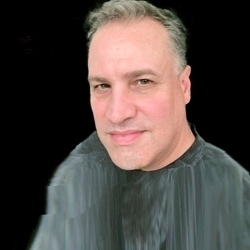An interesting article dubbed "Stimulus Plan for Candy: Pack It Full of Caffeine" appeared in the February 13th edition of the Wall Street Journal. WSJ writer Katy McLaughlin begins by stating: "The candy industry is rolling out new sweets packed with more than just sugar. Buzz-inducing candy, spiked with caffeine and, often, vitamins, are the low-growth, $29 billion U.S. candy, gum and chocolate industry's answer to surging competition from energy drinks. And just like those beverages, the caffeine-infused candy often sports a controversial name that critics say evokes illegal drugs."
In short, the candy industry seems to be reacting to a number of marketplace trends.
*
There were 3.3% fewer kids age 6-11 in 2007 vs 2002 according to U.S. Census statistics.
*
Sales of confectionary dropped by 4% from 2001 to 2006.
*
Sales of energy drinks rose by more than 400% to $3.23 billion from 2001 to 2006.
*
Health concerns: fear of obesity and diabetes have cut candy consumption.
Upshot? Candy companies have decided to jump-start their products (pun fully intended) by lacing them with the same components that have made energy drinks such a hot commodity. Here's a run-down on some of the new energy candies getting buzz in the marketplace:
*
Mars' Snickers Charged candy bar, packed with the same amount of caffeine found in a cup of coffee, plus B vitamins and amino acids–the latter are typically included in energy drinks.
*
Vroom Foods' Foosh Mints and Buzz Bites, with 100 milligrams of caffeine in each product.
*
Jelly Belly's Extreme Sport Beans with 50 milligrams of caffeine per one ounce bag, along with electrolytes.
*
Hershey's Ice Breakers Energy mints are caffeinated.
Both Mars and Hershey have made statements that these products have been launched due to consumer interest, and that they do not plan on marketing these products to young children. Some companies have labeled their products as "not recommended for children, pregnant women or people sensitive to caffeine", such as the Snickers Charged bar. Other companies have requested that retailers merchandise these products next to energy drinks or in sports nutrition sections. Yet others expect their products to be merchandised with other candy, citing that caffeinated soft drinks are often sold next to juice products.
Still, as parents know, these kinds of products are attractive to kids. Parents and school systems can both choose to ban energy drinks and caffeinated candy from their premises, but kids will be tempted to buy them on their way back and forth from school, or when they're out with their friends.
Questions:
*
What are candy companies' responsibilities when marketing caffeinated products, where kids are concerned? In advertising? In merchandising these products at retail?
*
Can you see scenarios where kids will use and even abuse these products?
*
Should schools allow any of these products in vending machines on their campuses?
*
Is it even a good idea to add caffeine to products that already contain a lot of sugar in most cases, and some caffeine already if they are made with chocolate?
*
How do you feel about candy makers jumping into this category primarily because so much money is being made by energy drink manufacturers?
I'd love to hear from you.
p.s. My thanks to Daily Fix friend and fellow blogger, Paul Barsch, for sending me a copy of this article. He suspected, and rightfully so, that this would interest me, as well as Marketing Profs' faithful blog readers.
Did you like this article?
Know someone who would enjoy it too? Share with your friends, free of charge, no sign up required! Simply share this link, and they will get instant access…
Know someone who would enjoy it too? Share with your friends, free of charge, no sign up required! Simply share this link, and they will get instant access…
Content Articles
You may like these other MarketingProfs articles related to Content:
- How Professional Services Marketers Are Approaching GEO
- The State of AI Use Among Professional Writers
- How to Make Content Experimentation an Always-On, Low-Lift Part of Your Workflow
- The Publishers Cited Most by AI Chatbots [Infographic]
- Is AI Effective for Editing Blog Content?
- FOMO Content Marketing: The Good and Bad of Chasing Trends [Infographic]




